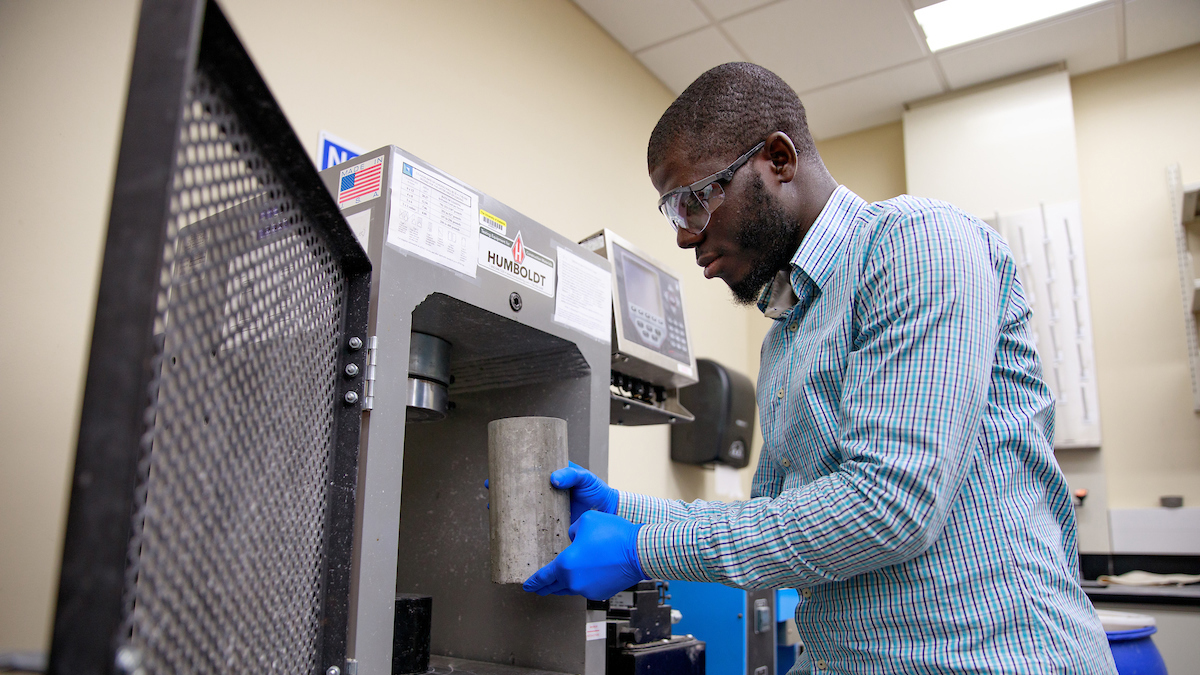
Engineering researchers at The University of Alabama have received $2.75 million in federal support to scale up and improve a patent-pending innovation that uses carbon dioxide to strengthen concrete while making its production greener.
The federal grants from the National Science Foundation and United States Department of Energy are part of nationwide investments to reduce greenhouse gas emissions and advance sustainable production of critical materials.
“Our technology provides a new pathway to reduce carbon emission for the concrete industry,” said Dr. Jialai Wang, professor of civil, construction and environmental engineering. “Our process can lead to improved mechanical strength, volumetric stability, and durability.”
As part of the energy department’s Carbon Negative Shot initiative Awards, a team led by UA received $2 million to test in a lab a low-cost, eco-friendly system to permanently store carbon dioxide from certain construction and industrial wastes through a carbonation process. The resulting carbon-negative material can be used to replace cement in concrete. The team also received a $750,000 grant as part of NSF’s Convergence Accelerator to investigate further how the innovation can be integrated into the existing production system to create environmentally and economically sustainable concrete.
The work builds on a process already patented by UA from Wang’s lab that was licensed last year to a Canadian company.
The process to make the commonly used cement in concrete, called Ordinary Portland Cement, accounts for about 8% of carbon dioxide emissions worldwide. Two current methods to sequester the greenhouse gas into the concrete either adding the gas during curing or mixing, but both have limitations in keeping the gas in the finished concrete.
Wang and his students have invented a new approach, in which carbon dioxide gas is reinserted into the cement slurry before mixing to form chemically stable minerals, capturing it permanently in the concrete. Going further than the licensed patent, the process now adds a biomolecule to the slurry to regulate the carbonation process.

Results so far show that the concrete can hold 3-5% of the cement’s weight in carbon dioxide, 15 to 20 times more than existing technologies. The process results in concrete richer in metastable calcium carbonate, which improves the strength of the concrete by up to 30%.
The strengthened concrete could mean using less material, therefore conserving resources and costs, Wang said. It could also mean calcium-rich, alkaline wastes can be converted into materials used to replace cement in concrete without losing strength.
By inserting carbon dioxide into the slurry or through recycling waste, less cement is needed, Wang said.
“Since less cement is used, the cost of the concrete is also reduced,” he said. “In addition, all waste streams generated during the concrete production process can be recycled using our technology, so the concrete industry can save a lot of money associated with treatment and disposal of these waste streams.”
Dr. Daqian Jiang, assistant professor of civil, construction and environmental engineering, works with Wang on the project supported by the energy department, and they are partnered with the University of Tennessee, National Renewable Energy Laboratory and Sutterlin Research.
Working alongside Wang on the NSF-funded project are Drs. Armen Amirkhanian and Siyuan Song, assistant professors of civil, construction and environmental engineering.
Contact
Adam Jones, UA communications, 205-348-4328, adam.jones@ua.edu
